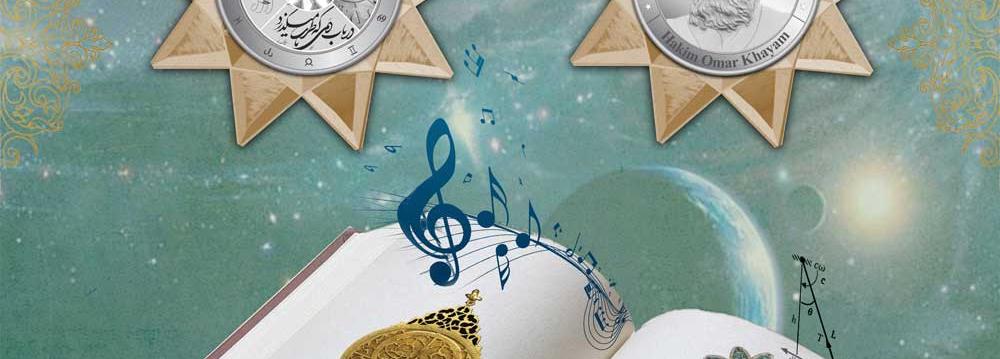Commissioned by the Association of Iranian Collectors, Iran’s Coin House has recently issued a medallion in commemoration of Persian polymath Omar Khayyam (1048-1131).
On the occasion of Khayyam’s 969th birth anniversary, the medallion was unveiled on May 31 at the association premises.
Each medallion weighs 40 grams, with silver comprising 39 grams and gold 1 gram, according to the website of Iran’s Coin House (shemshetala.com).
There are 969 medallions on sale currently and enthusiasts can refer to the website of Parnia Handicrafts (niyaco.com) for more information.
The medallion has a portrait of the polymath on one side, and at the center on the reverse side is his tomb in Neyshabur, Khorasan Razavi Province, which was designed by Iranian architect, sculptor, painter and scholar Houshang Seyhoun (1920-2014).
The minted portrait is designed after the statue of Khayyam at Laleh Park in Tehran which was sculpted by painter and sculptor Abolhassan Sadiqi (1894-1995), known as Master Sadiqi.
Other examples of Sadiqi’s works include the statue of Persian poet and author of Shahnameh (Book of Kings) Abol-Qasem Ferdowsi (940-1020) at Ferdowsi Square in Tehran, the statue of Nader Shah (1698-1747) at his mausoleum in Mashhad, Khorasan Razavi, and the portrait of Persian polymath Avicenna (980-1037) in Hamedan, the capital of Hamedan Province.
4 Facets of the Polymath
There are four inscriptions around the tomb on the reverse side of the medallion which refer to four facets in Khayyam’s life. One quarter refers to his being a poet and quotes one of his famous verses on carpe diem theme: “Seize your moment of mirth.”
Another quarter hints at Khayyam’s mastery in astronomy. It is part of the markings on an astrolabe. By observing the stars, Khayyam contributed to a calendar reform, developing the precisely computed Jalali Calendar, a solar calendar used in Iran.
The third quarter depicts a hyperbola intersecting with a circle. It is a geometric method for solving cubic equations included in the ‘Treaties on Demonstration of Problems of Algebra,’ one of the most important treaties on algebra before modern times, which he wrote in 1070.
The last quarter is about his being a musician. Khayyam analyzed music notes in mathematical methods and explained their pitches, ratios and the steps or intervals between them.
Around the four quarters, the 12 Zodiac signs are adorned.


